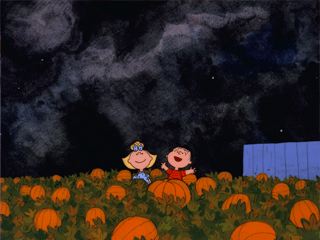
(Image from www.snoopy.com)
You may wonder where in the world my blog was last week. Well I was visiting the fascinating city of Arlington, Texas where my Great Aunt was celebrating her 90th birthday. Arlington's fame comes from it being home to the original Six Flags theme park, the Texas Rangers' Ameriquest Field, and the future stadium for "God's Team" the Dallas Cowboys. It's also the largest city in the U.S.--360,000--without a public transportation system.
Congressman Joe Barton, whose district includes Arlington, you may remember is the Energy and Commerce Committee Chair that played the role of organ grinder monkey leashed to his oil company owners at the "hockey stick" hearing in July. He's also responsible for 2005's Gasoline for America's Security Act that doled out money by the billions to his patrons in the petrobiz.
All these subsidies make the claim by Marketplace commentator David Frum that the free market will efficiently supply our energy needs similar to claiming the Great Pumpkin will deliver toys to all the good boys and girls waiting in the pumpkin patch--you might as well try trick or treating in Bel Air.
Joe Barton--whose middle name is Linus!--is clearly a blockhead with a B.S. in Industrial Engineering and M.S. in Industrial Administration who seems to think spreading toxic waste is like giving out candy on Halloween. Still those who attribute car dependency to corporate conspiracy live in the same comic book universe as those who believe the CIA was behind 9/11. In several hilarious columns Alexander Cockburn takes on these loonies who pester him with details "proving" that the government planned the whole pyrotechnic slaughter.
What's dangerous about conspiracy theories is not that they are always wrong--after all, Hoover and his cronies at the FBI did conspire to undermine civil rights by infiltrating groups like the Black Panthers with agents that provoked violence and disillusion in the movement. The problem is that focusing on the Machiavellian power of a few hides the complicity of the majority in maintaining the status quo. If it was simply a matter of exposing the manipulations of corrupt "Princes", then politics would not require the difficult work of organizing diverse coalitions through democratic dialogue.
The sad fact is that the lack of public transit in Arlington has little to do with the power of Chevron or GM, whose plant in Arlington assembles Chevy Tahoes and Cadillac Escalades. Instead the mostly white middle class residents three times rejected proposals to bring buses to their streets because they did not want their neighborhoods full of poor people. It's just like when you were seven and thought goblins were responsible for egging your house and smashing your pumpkins that late October night. Later you found out it was the high school kid down the block named Billy.


